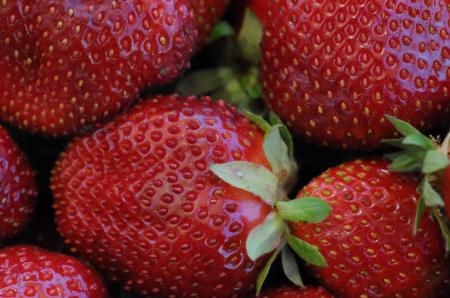UC Blogs
So Very Territorial!
Whether it's coming or going, you notice this pollinator's presence. The European wool carder bee (Anthidium manicatum), so named because the female...
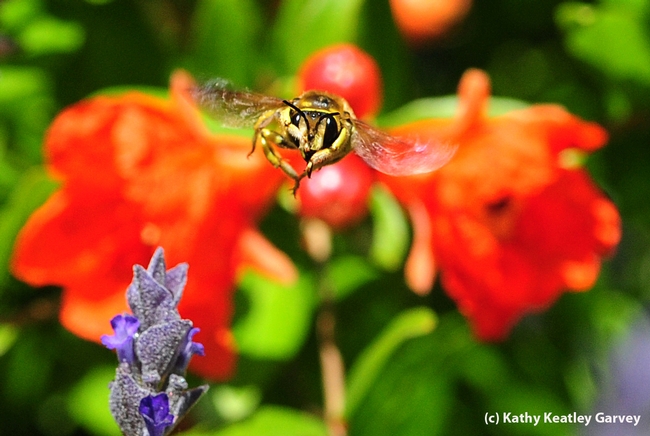
Male European wool carder bee is very territorial. Front, lavender blossoms. Back: pomegranate blossoms.(Photo by Kathy Keatley Garvey
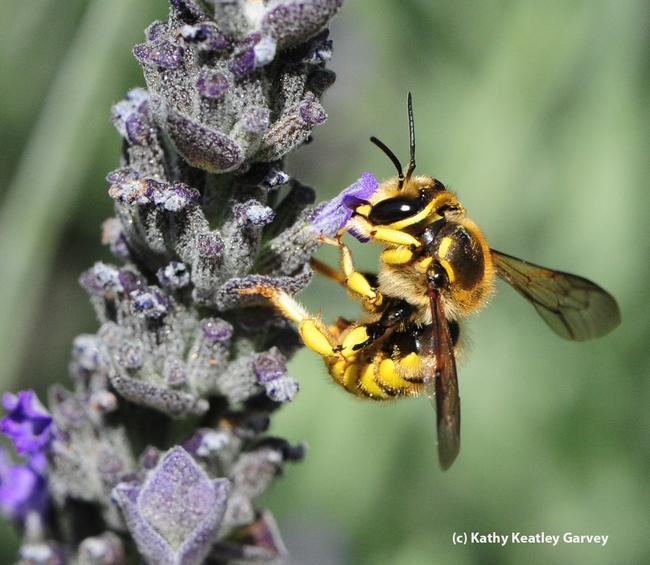
European wool carder bee nectaring lavender. (Photo by Kathy Keatley Garvey)

European wool carder bee is strikingly beautiful. (Photo by Kathy Keatley Garvey)
A Gift from the Andes
‘Looking for the perfect plant? How about a perennial that’s easy to grow, comes in different sizes and colors, arrives early, often stays late, and is beautiful and long-lasting in a vase on your dining room table?
Meet the Alstromeria. Sometimes called Princess Lily, Inca Lily or Peruvian Lily, the exotic names hide the ease of growing this plant in the garden. Plants come in a variety of colors and sizes. They can be yellow, white, red, and purple, dwarf, medium or tall. They have few problems with pests or different soils. Alstromeria requires little attention but the taller varieties should be cut back if they begin to lay down. Snails are just waiting for them to hit the ground so it’s good to remove the temptation. Flowers begin to bloom in late spring and it’s productive to pinch off the earliest blooms. They usually bloom profusely and continue off and on throughout late summer.
Cleaning them up during the season is actually fun and easy. Just grab a stem and pull it right out of the ground. This is also the way to pick them. The more you pick, the more they bloom. Their bulbs remain underground so they come right back the next spring.
The South American native has become increasingly popular and easy to find in local nurseries. As its familiarity has grown so have the variety of colors and sizes. Alstromeria likes our cool nights and warm days and requires very little care. If the soil is well drained and a thin layer of mulch is applied they stay pretty happy ... and so do we.
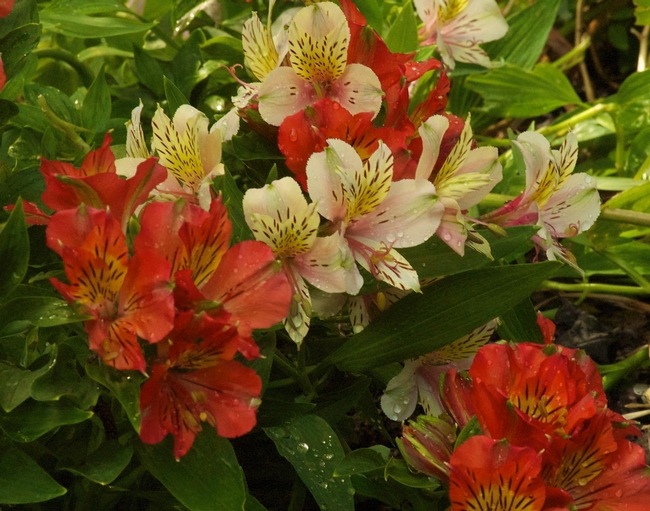
Red alstromeria. (photo by Tom Burton)
They'll Light Up Your Life
Most scorpions glow under an ultraviolet light, but now a discovery on Alcatraz Island reveals that a certain species of millipedes will,...
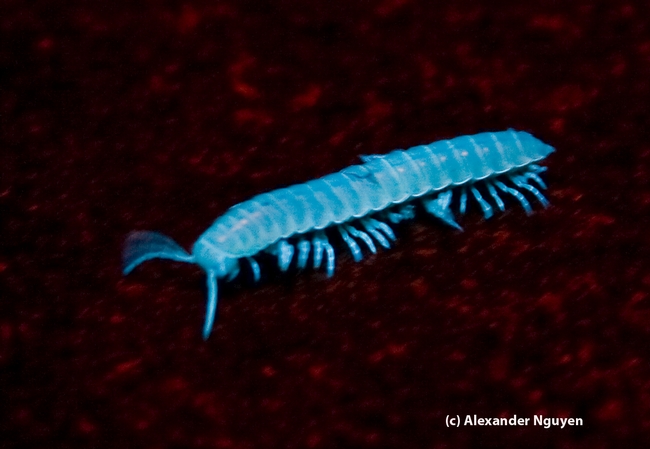
This millipede (Xystocheir dissecta) glows under ultraviolet light. Alexander Nguyen of the UC Davis Entomology Club captured this image on Alcatraz, during one of UC Davis forensic entomologist Robert Kimsey's field trips.
Central Coast community celebrates strawberries
Arroyo Grande recently hosted its annual Strawberry Festival, said an article in the Santa Maria Times. And this year, the city has more than ever to celebrate. In 2011, strawberries took the top spot in terms of production value in the San Luis Obispo Agriculture Commissoner's crop report.
The county’s strawberries were valued at more than $179 million in 2011.
Surendra Dara, UC Cooperative Extension advisor in San Luis Obispo County, a strawberry expert, said the 2012 crop is still larger and doing very well.
“In the fields I’ve been checking, they’re very tasty,” Dara said.
The factor that has the greatest impact on strawberry sweetness and flavor, he said, is variety. The most popular variety is the Albion, which was developed by the University of California. The UC-developed San Andreas variety is also popular.
Thinning Peaches
We have two peach trees (Prunus persica) in our backyard. The old tree, original to the property, is a delicious cling (the flesh adheres to the pit). We are not sure what type of peach it is, but it is still producing fruit. Since the harvest is usually small, we eat these as fast as they ripen. Well, okay, we do share a few of them with family and neighbors. The newer tree is a ‘Red Haven’, which is a freestone (the flesh separates from the pit). Last year my husband grafted an ‘Elberta’ peach onto a branch of this tree and it has fruit for the first time. The newer tree is 13 years old and was one of the first fruit trees we planted in 1999. We have always had a bumper crop of fruit on this tree and our friends, family and neighbors know when it is ‘peach picking time’ at our house. The peaches are firm, sweet and delicious, and ripen early in the season. In years past, we have made peach pies, peach jam, peach syrup ice cream topping, peaches and cream dessert bars, (you get the picture). To get these wonderful peaches, both trees are pruned and fertilized once a year, sprayed twice a year with dormant spray and thinned heavily each year. Most peach trees require 600 to 900 hours of winter chill. Annual pruning renews fruiting wood and encourages fruiting throughout the tree rather than at the ends of weak branches that would break. My husband is very particular about thinning. His goal is to have large, beautiful fruit. It is not unusual for him to fill his wheelbarrow half way full of one inch wide peaches when he is thinning. His motto is to thin 8 to 10 inches apart and he sticks to this method. This dedication pays off with magnificent peaches.
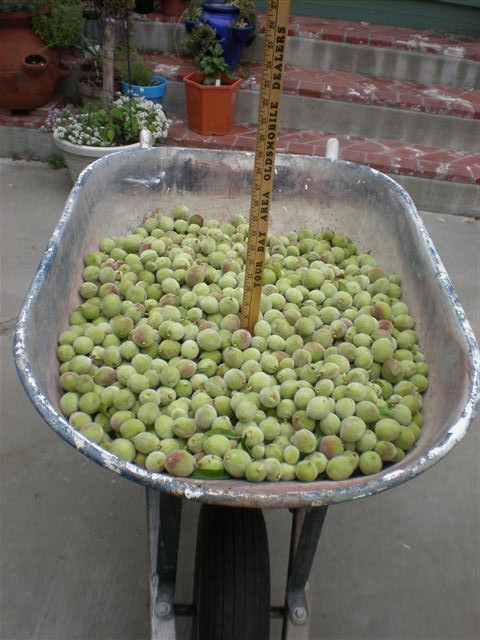
Wheelbarrow full of thinned peaches. (photos by Sharon Rico)
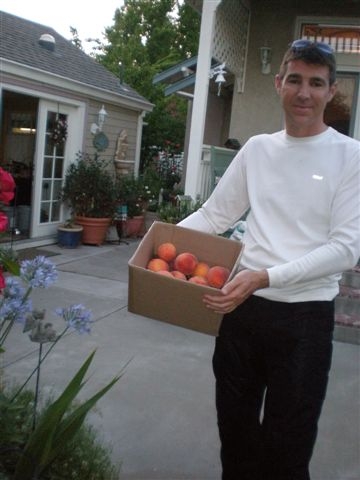
My son Joel with our peaches.


